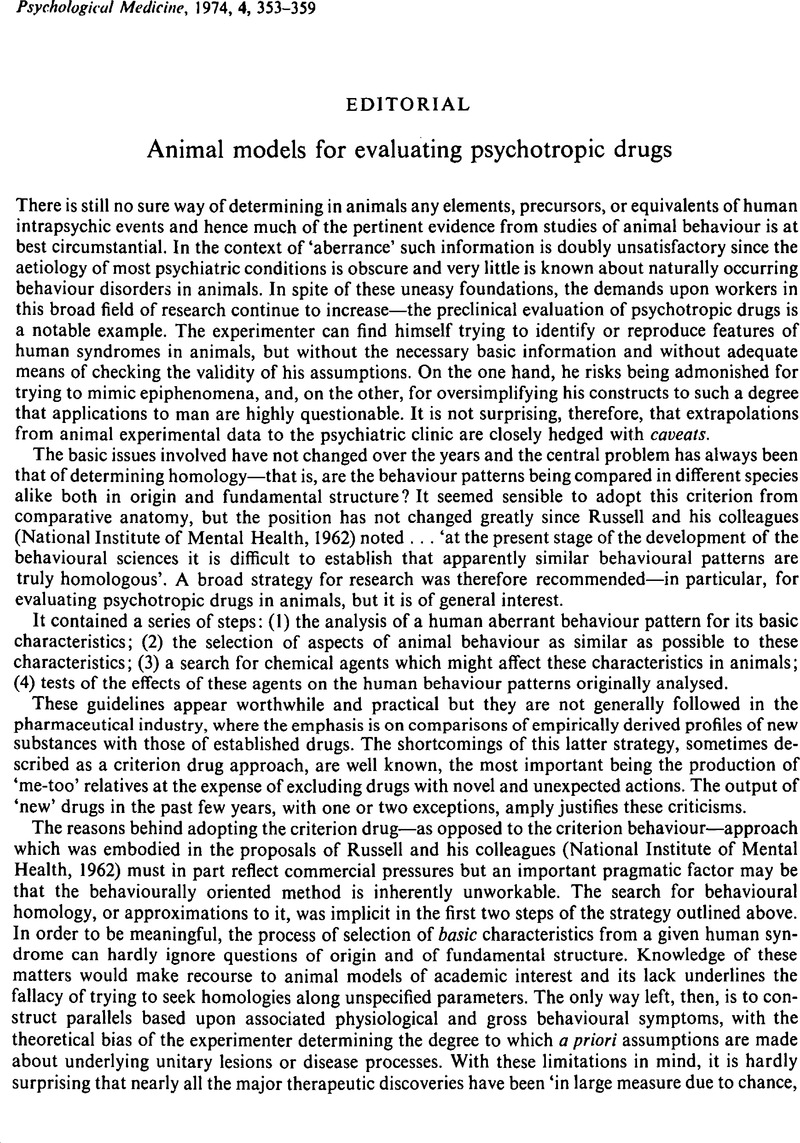Crossref Citations
This article has been cited by the following publications. This list is generated based on data provided by Crossref.
Kumar, R.
and
Stolerman, I. P.
1977.
Handbook of Psychopharmacology.
p.
321.
Tyrer, P.
1980.
Clinical Pharmacology & Therapeutics.
p.
368.
Sanger, David J.
1987.
Experimental Psychopharmacology.
p.
213.
Stevens, Anthony
1988.
Animal Experiments and their Alternatives in Psychiatry.
Alternatives to Laboratory Animals,
Vol. 15,
Issue. 4,
p.
313.





